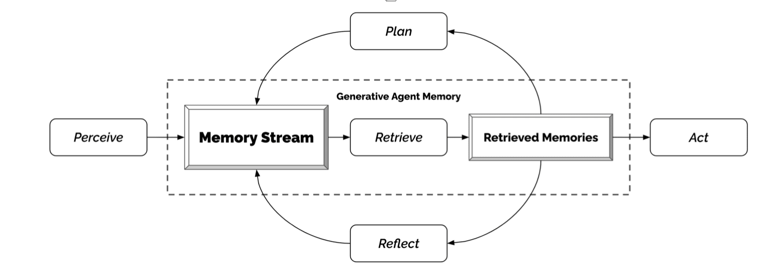Unlocking the Power of AI Agent Scaffolding and Centers of Intelligence

Artificial Intelligence (AI) has rapidly evolved from isolated models performing narrow tasks to interconnected systems capable of tackling complex enterprise challenges. The shift is driven by two groundbreaking concepts: AI agent scaffolding and the center of intelligence. Together, these approaches provide the framework and orchestration layer businesses need to scale AI adoption, improve decision-making, and accelerate innovation.
By leveraging agent scaffolding and building a unified center of intelligence, organizations can unlock the full potential of AI to streamline operations, automate processes, and drive more strategic outcomes.
What is AI Agent Scaffolding?
AI agent scaffolding is the practice of structuring multiple AI agents to work together in a coordinated framework. Instead of relying on a single AI system to perform end-to-end tasks, scaffolding distributes responsibilities across specialized agents.
How Agent Scaffolding Works
- Task specialization: Each agent focuses on a defined function such as data extraction, analysis, compliance validation, or customer interaction.
- Collaboration: Agents exchange insights, delegate subtasks, and contribute to a shared outcome.
- Scalability: New agents can be added or fine-tuned without disrupting the overall architecture.
This modular approach mirrors real-world teamwork, where specialists collaborate to deliver more accurate and efficient results than a generalist could achieve alone.
Why Agent Scaffolding Matters for Enterprises
Tackling Complexity
Enterprise problems often span multiple domains—finance, operations, compliance, and customer service. Agent scaffolding ensures that each of these domains has a specialized AI system contributing to the bigger picture.
Improving Accuracy and Reliability
By dividing responsibilities, scaffolding reduces errors that might occur if a single model tried to handle diverse functions. It also allows for more transparent monitoring and validation.
Accelerating Innovation
The framework is flexible, enabling companies to experiment with new agents and quickly adapt to evolving business needs without overhauling entire systems.
See also: Modern Well Pump Technology Improving Water Access
The Concept of a Center of Intelligence
While agent scaffolding focuses on collaboration among agents, the center of intelligence acts as the central nervous system that governs these interactions.
Defining the Center of Intelligence
A center of intelligence is an orchestration hub where AI agents, knowledge bases, and enterprise data converge. It ensures agents are aligned with organizational goals and operate under unified governance.
Core Functions of a Center of Intelligence
- Data orchestration: Centralizes data from multiple sources to ensure agents have accurate and up-to-date information.
- Governance and compliance: Establishes rules, policies, and ethical guidelines for AI operations.
- Performance monitoring: Tracks how agents perform, identifying areas for improvement and optimization.
- Human-AI collaboration: Enables human oversight, ensuring AI remains aligned with organizational objectives.
Benefits of Combining Agent Scaffolding with a Center of Intelligence
End-to-End Automation
Agent scaffolding distributes tasks across AI agents, while the center of intelligence orchestrates their collaboration. This combination delivers seamless automation across workflows such as finance operations, customer service, and compliance monitoring.
Enhanced Transparency and Control
Organizations gain real-time visibility into how agents interact, the decisions they make, and the data they use. This transparency improves trust and ensures compliance with regulations.
Greater Agility in AI Deployment
With scaffolding and orchestration in place, enterprises can roll out new AI initiatives faster—testing and deploying agents without disrupting existing systems.
Real-World Applications
Financial Services
In finance, agent scaffolding can handle tasks like invoice validation, fraud detection, and report generation, while the center of intelligence ensures compliance with global regulations.
Healthcare
Scaffolding enables agents to manage patient data, clinical trial records, and treatment recommendations. The center of intelligence ensures data privacy and ethical use of AI in sensitive domains.
Customer Experience
Multiple AI agents can manage chatbots, sentiment analysis, and personalization engines. A centralized intelligence hub ensures a consistent and human-centric experience across touchpoints.
Building the Future of AI with ZBrain
Platforms like ZBrain are pioneering how enterprises can adopt these concepts. By offering agent scaffolding frameworks and a robust center of intelligence, ZBrain empowers organizations to:
- Design specialized AI agents for diverse business functions.
- Orchestrate collaboration through a unified intelligence hub.
- Maintain compliance, transparency, and scalability.
Conclusion
AI is no longer about isolated systems performing narrow functions. The future lies in interconnected, orchestrated intelligence—where agent scaffolding creates modular efficiency and the center of intelligence drives cohesion and governance. Together, they form the backbone of enterprise AI strategies, ensuring scalability, reliability, and measurable business impact.
Businesses that embrace this dual approach will not only streamline operations but also set the foundation for long-term innovation and competitive advantage.




